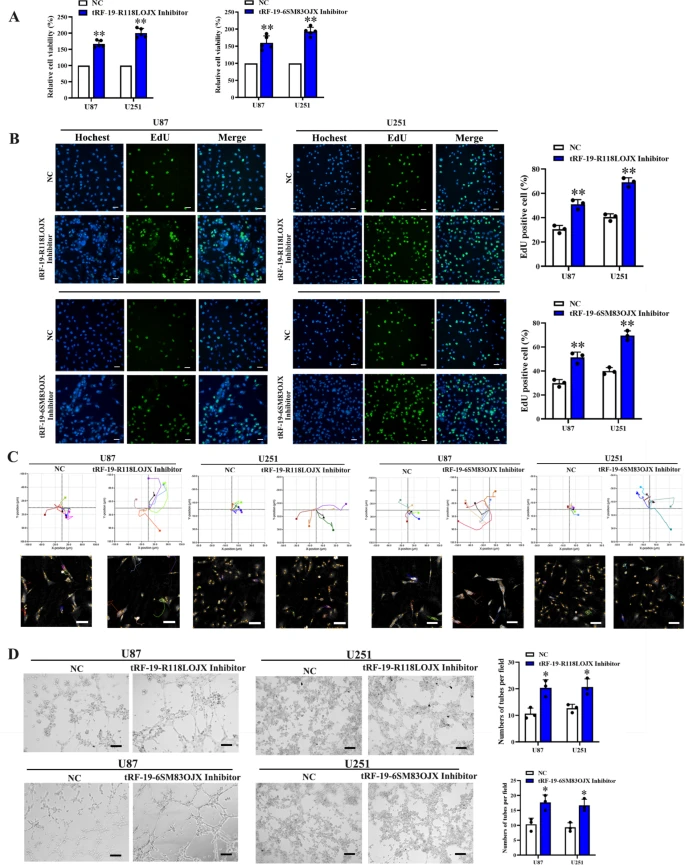Customer Publication

Expression profiles and function prediction of tRNA-derived fragments in glioma
Journal: BMC Cancer (2023)
Institution: Department of Neurobiology, School of Life Sciences, China Medical University, Shenyang, China
Research Areas: Cancer research
Cell Lines: U87MG, U373MG, U251MG, SVG p12 (Human glioma cell lines, human astrocyte cell line)
Summary: The paper discusses the role of transfer RNA-derived fragments (tRFs) in glioblastoma (GBM), the most aggressive malignant primary brain tumor. The study analyzed the expression profiles of tRF subtypes using the Cancer Genome Atlas (TCGA)-low-grade gliomas (LGG)/GBM dataset. The authors identified tRF-19-R118LOJX and tRF-19-6SM83OJX as the most differentially expressed tRFs between LGG and GBM groups. The functional enrichment analysis showed that the target genes of tRF-19-R118LOJX and tRF-19-6SM83OJX are enriched in regulating blood vessel development. The upregulated target genes are linked to adverse survival outcomes in glioma patients. tRF-19-R118LOJX and tRF-19-6SM83OJX were identified to suppress glioma cell proliferation, migration, and in vitro vasculogenic mimicry formation. These finding suggest that tRFs may be associated with GBM pathogenesis and act as potential biomarkers and therapeutic targets for GBM. The authors used HoloMonitor cell migration assay to examine the effects of tRF-19-R118LOJX, tRF-19-6SM83OJX, and S100A11 on glioma cell proliferation, migration, and in vitro vasculogenic mimicry formation ability.The authors used HoloMonitor cell migration assay to examine the effects of tRF-19-R118LOJX, tRF-19-6SM83OJX, and S100A11 on glioma cell migration ability.